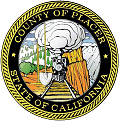Placer County CA - WWI Draft Registration
In 1917 and 1918, approximately 24 million men living in the United States completed a World War I draft registration card. These registration cards represent approximately 98% of the men under the age of 46. The total U.S. population in 1917-1918 was about 100 million individuals. In other words, close to 25% of the total population is represented in these records.
The WWI draft registration cards database can be an extremely useful resource because it covers a significant portion of the U.S. male population in the early twentieth-century. If you had family in the United States during WWI, you are likely to find at least one relative’s information within this large collection. In addition, these cards contain more than just names and dates; they can contain significant genealogical information such as birthplace, citizenship status, and information on the individual’s nearest relative.
Registration
The World War I draft consisted of three separate registrations.
- First Registration. The registration on 5 June 1917, was for men aged twenty-one to thirty-one—men born between 6 June 1886 and 5 June 1896.
- Second Registration. The registration on 5 June 1918, was for men who had turned twenty-one years of age since the previous registration—men born between 6 June 1896 and 5 June 1897. Men who had not previously registered and were not already in the military also registered. In addition, a supplemental registration on 24 August 1918, was for men who turned twenty-one years of age since 5 June 1918.
- Third Registration. The registration on 12 Sept 1918, was for men aged eighteen to twenty-one and thirty-one to forty-five—men born between 11 Sept 1872 and 12 Sept 1900.
Registration Cards
Each of the three separate registrations used a slightly different version of the draft registration card. Because different cards were used, the information included in each varies.
In general, the registration cards included the following information:
- Full name
- Home address
- Date and place of birth
- Age, race, and country of citizenship
- Occupation and employer
- Physical description (hair and eye color, height, disabilities)
- Additional information such as address of nearest relative, dependent relatives, marital status, father’s birthplace, or previous exemption from service
- Signature
The card used for the first registration (sometimes called the Twelve-Question card because of twelve questions on the front) includes this information: name, age, address, date and place of birth, citizenship status, employer’s name and address, dependent information, marital status, race, military service, and physical appearance.
The card used for the second registration (sometimes called the Ten-Question card because of ten questions on the front) includes this information: name, age, address, date and place of birth, father’s birthplace, citizenship status, occupation, employer’s name and address, dependent information, name and address of nearest relative, and physical appearance.
The card used for the third registration (sometimes called the Twenty-Question card because of twenty questions on the front) includes the name, address, age, date of birth, race, citizenship status, occupation, employer's name and address, name and address of nearest relative, and physical appearance.
The WWI Draft Registration Cards Today
The original records are kept at the National
Archives—Southeast Region in East Point, Georgia.
Microfilm copies are at the National Archives
regions that serve their respective states. In
addition, some large libraries have the film of
these cards for their own state. You may want to
inquire on state or county message boards
(boards.ancestry.com) about the potential
availability of some records in your own area.
[Explanation and pdf sample cards from
Ancestry.com]
| A | B | C | D | E |
| F | G | H | I | J |
| K | L | M | N | O |
| P | Q | R | S | T |
| U | V | W | X | Y |
| Z | Return to Military Page | |||

Photo: National Archives

